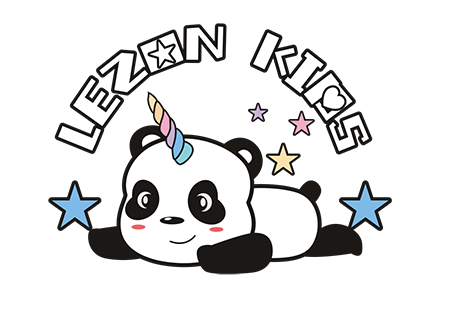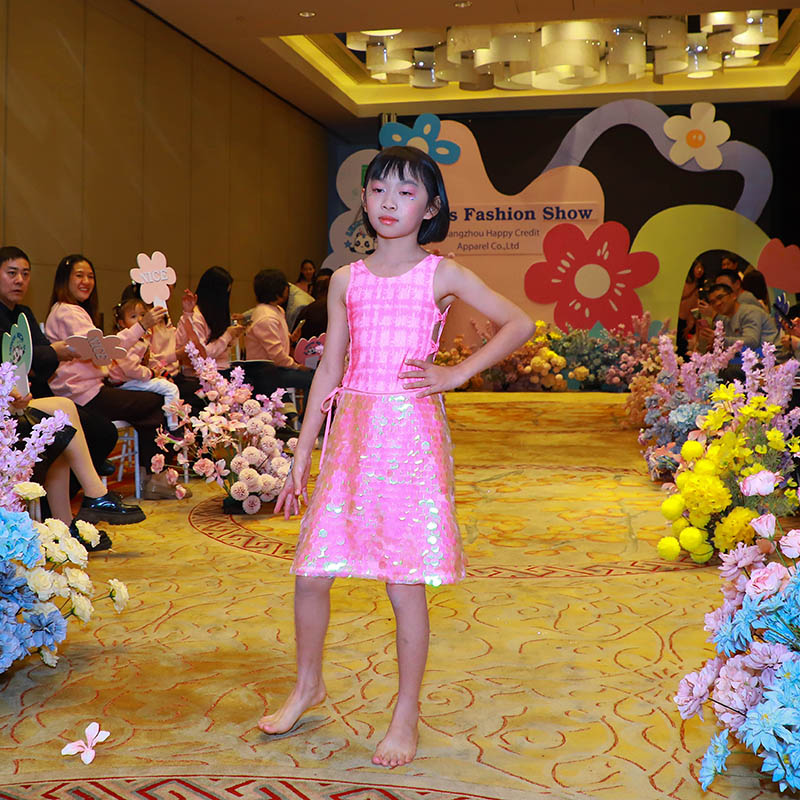Overview of Children’s Clothing Design
I. Overview of Children’s Clothing Design
Children’s clothing refers to garments for minors, including infants, toddlers, school-age children, and teenagers. Children’s clothing design is a process that involves gaining inspiration through natural observation, experiential discovery, and analytical research of others’ works, followed by internal thinking activities. The design is first expressed on paper through necessary means, then undergoes comparison, reflection, and optimization to arrive at the final design scheme.
Children’s clothing design involves understanding and studying children’s clothing from multiple perspectives, focusing on explaining the basic knowledge of children’s clothing and the essential elements of its design. To study children’s clothing design in depth, it is necessary to have a systematic understanding of basic knowledge, concepts, consumer markets, and fundamental principles of children’s clothing design. Following the adult clothing market, the children’s clothing industry has emerged as a new market, becoming a new growth trend in the clothing industry. With the improvement of people’s living standards, children’s clothing design increasingly emphasizes cultural characteristics and design awareness.
Children’s clothing design must not only grasp the psychological and physiological characteristics of children but also understand the psychology of parents. Designers should approach their work with parental affection to design, shape, and beautify children’s clothing images. Clothing should serve as a health product that aids children’s growth and development, as well as a “companion” that helps cultivate good living habits in children, allowing them to enjoy beauty and be influenced by it.
Section 1: The Concept of Children’s Clothing and Its Brief Development History
Children are a relatively special group. The growth changes and psychological characteristics of children at different age stages are important bases for children’s clothing design. Children have a close relationship with clothing: clothing is not only a necessity for their lives but also their intimate “companion,” and an external manifestation of children’s physical and psychological needs at different growth stages.
The Concept of Children’s Clothing
Children’s clothing, or kids clothes refers to garments worn by minors. It includes clothing for various age groups: infants (0-1 year old), toddlers (1-3 years old), school-age children (young children, 4-6 years old), pre-teen children (7-12 years old), and older children (13-17 years old).
Children’s clothing is the sum of children and clothes, reflecting the combined relationship between children, clothing, and the environment, and represents the state of minors after wearing clothes. Due to children’s immature psychology, rapid physical development with significant changes, strong curiosity, and lack of complete behavioral control, children’s clothing design places greater emphasis on the safety, functionality, and decorativeness of the garments.
II. A Brief History of Children’s Clothing Development
The design of children’s clothing was not established until the late 18th century. For a long time before that, children’s clothing was just a miniaturized version of adult clothing, which could not fully reflect children’s physiological and psychological characteristics. At that time, children’s clothing had the same styles as adults, such as clothes with low collars, crinolines, and breeches.
1. The History of Foreign Children’s Clothing Development
In the late 19th century, Western children’s clothing began to differ from adult clothing, and its design gradually reflected functional characteristics that were adapted to children’s development. During this period, children’s clothing was mostly made by hand, and emphasis was placed on its practicality and economy. For example, the overall size was made larger to adapt to the rapid physical development of children; children’s clothing was sewn sturdily so that it could be passed on to younger children (or the next generation). Meanwhile, influenced by the Industrial Revolution, some manufacturers began to produce and sell children’s clothing, but the styles of clothing were not very diverse.
After World War I, the development of the children’s clothing industry followed that of the women’s clothing industry. Later, as women began to go out of their homes to participate in social work and had less time to make clothes, children’s clothing truly started to be produced and sold commercially. At the same time, manufacturers seized the opportunity to use industrialized technology to produce a batch of clothing that was stronger and more durable than home-sewn ones. The birth of professional machinery made buttons and zippers more advanced than those sewn at home, and could also complete many processes that workers could not achieve. The improvement of process technology and large-scale production also promoted the development of the children’s clothing industry. After World War I, manufacturers began to standardize the sizes of children’s clothing, which marked a big step forward in the development of children’s clothing. Initially, the sizes of children’s clothing were very simple, but with the emergence of various types and subdivisions of children’s clothing, a complete size system was developed.
In the 1940s, movies and tape recorders began to enter American life. Many parents started to dress their children like movie stars, especially teenagers, who had a certain sense of aesthetics and paid attention to their own appearance, so they tried to dress like the movie and music stars they admired. In the 1950s, when television entered American households, it brought about huge changes in the children’s clothing industry. Children liked watching TV and advertisements, and TV programs suitable for different ages could help viewers of each age group understand popular clothing styles. Both preschool children’s educational TV programs and the later world-famous Mickey Mouse Club became objects of imitation in dressing for children and parents at that time. Clothing manufacturers and retailers in the Los Angeles area of the United States took advantage of the effect brought by television to continuously expand the children’s clothing market.
In the 21st century, the application of modern high-tech technologies has further promoted the development of the children’s clothing industry. Computer-aided operating systems have enabled automation and mechanization in some parts of children’s clothing design. For manufacturers, computers and the Internet can help them respond more quickly to the fashion trends of children’s clothing. They look for global partners (fabric manufacturers, production factories, retailers, etc.) on the Internet to continuously expand their markets, which also continuously stimulates the development of the children’s clothing industry. Nowadays, the most basic requirement for children’s clothing is no longer the original function of keeping out the cold, but the fashionability of children’s clothing (Figure 1-3). The development of society constantly puts forward new requirements for children’s clothing design, which are reflected in the design works of many famous children’s clothing designers. However, children’s clothing design must be viewed from a commercial perspective. The children’s clothing industry needs to have a sense of fashion, but it is not completely fashionable. In design, attention should be paid to both the individual expression of children’s clothing and its cultural connotation.
Strictly speaking, the clothing for children in ancient China was just a reduced version of adult clothes, or small waistcoats and jackets made by parents to pray for their children’s health (Figure 1-5), which could not reflect the concept of children’s clothing design. Chinese children’s clothing emerged with the development of modern clothing after Western-style clothes entered China in the 1930s, and it is a product of the combination of Chinese and foreign clothing. Due to the late start of China’s children’s clothing industry and the lack of scientific research on children’s physiology and psychology, children’s clothing design paid more attention to functions such as keeping out the cold, covering the body, and keeping warm, so that a piece of clothing would be worn by an older child and then passed on to a younger one. Early children’s clothing had little seasonality, a weak sense of the times, dull colors, and outdated styles, which could not reflect the physical and mental development of children and the cultural ideas of children’s clothing.
Figure 1-3: Girls’ clothing produced by modern technology

Figure 1-4: Boys’ clothing with cartoon patterns

Figure 1-5: Ancient Chinese children’s clothing
With the continuous improvement of people’s living standards and aesthetic ability, children’s clothing no longer only meets the basic practical needs. After the 1990s, China’s children’s clothing entered a period of rapid development. Parents constantly looked for children’s clothing with characteristics, personality, and high quality. At this time, children’s clothing that was beautiful and elegant, with novel styles, bright colors, and both safety and comfort was favored by the public. Facing the huge children’s clothing market, the design level of China’s children’s clothing still has a considerable gap compared with that of developed countries. China’s children’s clothing design is not humanized enough, with prominent traces of adult clothing, and lacks safety and popularity. Children’s clothing needs to focus on the expression of individuality, functionality, and cultural connotation in design according to the psychological and physiological changes of children at different age stages. Now, children’s clothing manufacturers have fully realized this, and in design, they pay more and more attention to children’s psychological and physiological needs and characteristics, as well as the cultural value and brand effect contained in the clothing itself. The focus of branding is to rebuild the “concept of brand children’s clothing design”.






